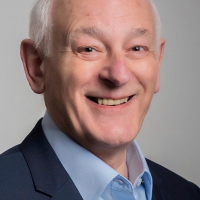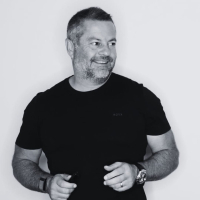Summary
Retired from Unilever and now work freelance for the global oral care business specialising running workshops on the formulation, raw materials and technology of oral care products and auditing raw material suppliers.
I have run training courses for many of the global flavour companies (Givaudan, Symrise and Sensient), global raw material suppliers (PQ Silicas, OMYA (calcium carbonate), Imerys (calcium carbonate), Ashland (polymers).
I also give 'coffee-table' takes on cruise ships (Princess, Celebrity, Fred Olsen and Cruise and Maritime Voyages), and to local institutions and societies (Women's Institute, Bebington library). The topics are varied and include:
PUT KETTLE ON LET’S HAVE A NICE CUP OF TEA
Tea is quintessentially British – this series of three talks charts the origins of tea drinking in China and how Britain fought the Opium Wars in order to maintain its supply of tea. With problems in China Britain looked for a new source of tea – India was the obvious choice. Whilst tea growing was being established in India the great Clipper ships, notably Cutty Sark, sailed the oceans between China and London bringing home her cargo tea. The talks conclude with the rise in tea shops in the cities and, for those of us old enough to remember, the black and white uniformed Nippies who served tea and cakes. Finally on to how the big tea brands evolved – Brooke Bond (there was a Mr Brooke but not a Mr Bond), Ty-Phoo (Chinese for doctor) and Liptons.
1. For All The Tea In China
This talk explores the early history of tea from its roots in China through to its arrival in Britain – bought from Portugal by Catherine Of Braganza the wife of Charles II. Later the taking of Afternoon Tea was introduced by Anna Maria Russell, 7th Duchess of Bedford in the 1840s and tea drinking grew more popular in the Victorian era. Finally the tea bag was developed by the wife of the American tea merchant Thomas Sullivan.
2. Opium Wars, Boston Tea Party, Clipper Ships and The War Effort
This talk traces the events that led to the Opium Wars when England traded Indian opium for Chinese tea and the high taxation of tea that led to the Boston Tea Party. The second part of the talk covers the famous Clipper ships that raced each other home to London with the season’s first tea. Finally a look is taken how tea kept moral high during the two World Wars.
3. Tea Shops and Tea Brands
This talk charts the rise of tea shops in England first developed by Lyons Tea and the ABC Company. In these tea shops smart waitresses nipped between seated customers serving tea and sandwiches – not too surprisingly they were nick named ‘Nippies’. The second part of the talk charts the formation and rise of some of the more popular tea brands; Liptons (a rag-to-riches story), Brooke Bond (Mr Brooke was real but Mr Bond was not), Ty-Phoo (taken from the Chinese for ‘doctor’ and Tetley (the original Tetley brothers sold salt).
THE HISTORY OF COFFEE
For the non-tea drinkers a talk on how, in America, the coffee business was established and how it spread to Europe and Britain.
1. Full Of Beans! A Decaffeinated Skinny Latté To Go
The amusing story of how we got our daily cup of coffee. From the goat herder who ‘discovered’ coffee, via the women who tried to ban it, to today’s iconic brands such as Maxwell House which took its name from the hotel where it was first served.
THE HISTORY OF MAKE-UP AND PERFUMES
For the ladies but hopefully some men may be brave enough to listen! Used everyday but perhaps without thinking this series of talks charts the often turbulent rise of the make up, cosmetics and perfume industries. Make up had its origins in ancient Egypt but soon became popular in Europe. However many of the early ingredients were toxic and, for some early young fashion icons, it was really make up to die for!
Coco Chanel was obsessed with the number five – not surprisingly her first perfume was Chanel No 5. The Avon company had its roots as the Californian Perfume Company in the USA but its creator loved Shakespeare’s birth place Stratford On Avon - and so the change in name.
1. Make-Up To Die For
This talks charts the history and development of what we now call ‘Make-Up’ and begins in early Egyptian times where, in particular, the Khol eye make-up contained lead, antinomy and mercury - substances that we would now consider as extremely harmful. Make-up continued to flourish during Roman times where many of the harmful ingredients were still used. In England Elizabeth I popularised a very pale complexion using lead-based powders and creams which probably contributed to her death. Later the Church and Queen Victoria denounced the use of make-up and in the 18th century the society ladies Maria Gunning and Kitty Fisher were the first recorded deaths from ‘make-up’.
2. Looking Good –Smelling Even Better
This talk charts the history and development of perfumes from their first use in religious ceremonies and how, much later, the Black Death and the leather industry helped their development. The second part of the talk looks at the history of and how some of the more famous perfume brand got their names – Chanel No 5, Avon, 4711, Crown Perfumery and Old Spice.
3. BO And Bad Breath –What A Turn Off!
This amusing talk charts the development of deodorants and oral care products – two ‘cosmetics’ we apply daily but perhaps think little about.
Historically in many cases BO was positively appreciated! But how is BO produced and why does it smell? Learn why men should be careful in pig farms, how trained female ‘arm pit sniffers’ evaluated modern deodorants and how Mum, the first successful brand of deodorant got its name. Historically toothache was thought to be due to a worm gnawing inside the tooth, the great French dentist Pierre Fauchard recommended using ones own urine as a mouthwash? For those cruise-ship-quizzers the talk covers the first UK advert on UK TV (Gibbs SR toothpaste), the world’s first striped toothpaste (Signal), the famous jingle ‘You wonder where the yellow went when you brush your teeth with ….’ (Pepsodent) and how decay-fighting fluoride was ‘discovered’.
4. Lashes and Lips
The history of mascara and lip stick. Tom Lyle Williams sat and watched his sister make home-made mascara from soot and Vaseline – he though he could do better. His sister was named Mabel so he developed the Maybelline Company! Lip stick had an ‘up-and-down’ history often seen fit for use only by actresses and prostitutes! However with the advent of the film industry it slowly became popular and commercialised by Helena Rubenstein, Max Factor and Elizabeth Arden.
ASTRONOMY
Looking up at a clear night sky we have all at some time wondered how did it begin and will it end? With fantastic images and video clips from NASA and the International Space Station this series of talks traces the current ideas on the origin, evolution and fate of the Universes and of Earth. Fortunately the position of the Earth is just in the right place – not too hot nor not too cold just right for life to emerge. Astronomy and cosmology has also show how the Earth is in a unique place to keep us safe.
The talk usually commences with an overview of the Northern Lights – the dramatic light show that has fascinated mankind for centuries but is, in fact, one of Earth’s mechanisms helping to keep us safe.
1. The Northern Lights.
This talk charts the history and origins of this beautiful natural light display seen close to the Northern and Southern Poles using images and video clips taken from the International Space Station. The colourful display of lights arises from particles emitted by the sun being focused, through the Earth’s magnetic field, at the poles where they interact with out atmosphere to produce the fantastic light displays.
2. Our Place in the Universe
In ET Phone Home what address for planet earth did he give for the space ship to return and rescue him? This talk discusses how the early astronomers, together with the invention of the telescope, began to understand where planet Earth was in the solar system, the Milky Way and the wider universe.
3. The Big Bang - How did it all Begin?
This talk, in simple terms, charts the history and development of the Big Bang theory i.e. the origin of the universe. The term Big Bang was a sort of flippant comment made by Fred Hoyle, who was not a supporter of the theory, on a BBC radio programme in 1949. The talk continues to explore the life and death of stars and how they are responsible for the formation of the 92 elements that make up, not only us (we are star dust) but everything around us and how stars were responsible for the formation of planets and solar systems like our own.
4. The Solar System
A grand visual tour of our Solar System using superb images from NASA, the International Space Station and the numerous missions that have been launched to photograph and map the planets and our Solar System.
5. Keeping Us Safe - How Earth Evolved To Support Life
This talk discuss how Earth is just in the right place to nurture life – the Goldilocks Zone – not too hot, not too cold, Jupiter close and big enough to deflect asteroids from us, our magnetic field to keep us safe from the Solar Wind and Geomagnetic Storms and an atmosphere to protect us from Solar Radiation with an ozone layer.
6. White Dwarfs, Neutron Stars, Pulsars And Black Holes
A simple look at some of the more exotic structures that astronomers have found in our universe. What are they, how were they formed? Well they all have their origin in the violent death of stars – particularly in what we now call Supernova explosions.
THE HISTORY OF SOME EVERY DAY PRODUCTS
This series of talks charts the origins and history of a number of everyday products. It begins with how a grocer (William Hesketh Lever) from Bolton had an idea to place a bar of soap in a wrapper with a brand name. This grew to become one of the world’s largest multinational companies. The famous soaps were Sunlight Soap and Lifebuoy Soap. Together these soaps helped families out of the grime and disease of Victorian England. He built a village for his workers at Port Sunlight and his advertising brought art to the masses. He went on to bring other products to the masses including Walls sausages and ice cream and Birdseye peas and fish fingers.
1. William Hesketh Lever and Unilever
William Hesketh Lever was a grocer from Bolton who had an idea to wrap soap in paper with a brand name and later to manufacture the soap himself. This was the birth of consumer-product advertising with Sunlight Soap and the origin of the Multinational company Unilever. Lever not only developed advertising but he built a factory and village for his workers – Port Sunlight. This talks chats the early history of the company, a visual tour around his purpose built village and the products he made – Sunlight Soap, Lifebuoy Soap, Pears Soap, Rinso, Lux, Vim and Gibbs toothpaste. The talk is illustrated with colourful early adverts for his products.
2. Well I Never Knew That Part 1
This talk covers the history and advertising of some of the first branded soaps through their early adverts. Products include Sunlight Soap, Lifebuoy soap (it was a life-line a ‘lifebuoy’ to the Victorian mother whose family was at risk from disease and grim (hence the image of the lifeboat man), Pears soap and the Miss Pears Competition and Vinolia soap. Not only did Lever manufacture soap but he tried to educate his consumers – he produced illustrated encyclopaedias and bought famous paintings to use in his advertising.
3. Well I Never Knew That Part 3
This talk covers the history of some of the more ‘everyday products’ produced by the Unilever Group. Clarence Birdseye was a real man who, after watching the Intuits freeze fish, had an idea – the Birds Eye frozen Foods Company. John Hewer played Captain Birdseye in advertising fish fingers until he retired at the age of 76 and Patsy Kensit, aged 4, featured in the icon advert with the slogan ‘Sweet as the moment the pod went pop’ for Birdseye Peas - which also was the first colour advert on UK television. Walls sausages were initially introduced by Edmund Cotterill in 1786 selling them in London. Much later the sales of pork sausages declined during the summer months so the company looked for a new product – ice cream. It was sold by bicycle riding salesmen with the slogan ‘Stop me and buy one’. And finally the OXO cube was originally a German invention!
DRAMATIC NORWAY
1. Myths & Legends of The Northern Lights
Norway is famed as one of the gateways to the spectacular Northern Lights. Since time immemorial man has gazed upwards, both in awe and in fear, at this light show. So not surprisingly many myths and legends have grown up around this light show.
The Lapps saw the lights as messengers of God which might strike down anyone foolish enough to provoke them. The Vikings identified them with the Valkryies, riding out from Valhalla across Bifrost, the bridge that links this world to the next. Other explanations in Scandinavian folklore suggest the lights are reflections from icebergs, the wings of migrating geese, or from shoals of herring swimming close to the surface of the sea.
Centuries later Norwegian scientist Kristian Birkeland (1867 – 1917) proposed one of the first scientific theories for the Northern Lights earning him the title of ‘the first space scientist’ and the Tromso Museum has a display dedicated to him.
Today, whilst we have an understanding of the mechanism of the Northern Lights, it nevertheless does not detract from this awe inspiring light show.
The talk concludes with a video clip of the Northern Lights courtesy of the International Space Station.
2. Norway – Past And Present
This talk briefly describes the history of Norway, one of its famous explorers Leif Ericson, Norway’s fjords (one of its major tourist attributes) and more recently the growth of Norway’s oil industry.
Norway's coastline rose from glaciation with the end of the last glacial period about 12,000 BC. The first immigration took place during this period as the Norwegian coast offered good conditions for sealing, fishing and hunting. It has a long and turbulent history having unions with both Denmark and Sweden and gained full independency relatively recently in 1905 with Haakon VII crowned king of Norway.
Norwegians discovered Iceland around 870 and within sixty years the island had been divided between four hundred chieftains. Led by Erik the Red, a group of Norwegians settled on Greenland in the 980s. His son, Leif Ericson, discovered Newfoundland in ca. 1000, naming it Vinland.
Stunningly beautiful and awe-inspiring the fjords are an incredible part of Norway’s coastline. Formed by ancient, slow moving glaciers carving into rock as they moved towards the sea, fjords are very steep, long valleys and have become synonymous with Norway.
3. Myths & Fairy Tales
This talks looks at the traditions of the Norwegian trolls, the music of Edvard Grieg particularly Peer Gynt and the folklore of traditional Norwegian gem stones such as Thulite (Norway’s national stone) and Iolite (Norwegian sunstone which was used by the Vikings as an early compass).
CHRISTMAS TRADITIONS
A series of festive talks tracing the origins of our Christmas traditions. We look at how Queen Victoria and Albert popularised the Christmas tree and present giving, how the British confectioner Tom Smith had the idea of a Christmas Cracker and how the Christmas card was again a British invention.
1. Christmas, Christmas Trees and Decorations
This talk traces the origins of Christmas from earlier Pagan and Roman celebrations to today’s traditions, the Christmas tree and Christmas decorations.
The Christmas tree was introduced, from Germany, into England by Queen Charlotte in 1821 and later popularised by Queen Victoria and her husband Albert. In the 1930's, the Addis Brush Company created the first artificial-brush trees, using the same machinery that made their toilet brushes! Edward Hibberd Johnson, a business associate of Thomas Alva Edison, is credited with showing the first Christmas tree with electric lights in his house onDecember 22, 1882 in New York City.
2. Christmas Cards, Advent Calendars, Crackers & Food
The first Christmas card was commissioned by Sir Henry Cole and illustrated by John Callcott Horsley in London on May 1st 1843 and gradually became very popular and were again popularised by Queen Victoria and Albert. In 1908 the first printed advent calendar was made by the German Gerhard Lang. Christmas crackers were developed by the London confectioner Tom Smith around 1840 after visiting Paris and seeing sugar coated bonbons on sale. His idea of the ‘cracking’ cracker (marketed as ‘Bangs of Expectations’) can whilst sitting in front of a log fire.
The Christmas turkey - Spanish Conquistadors brought this new delicacy back to Europe and by 1524 it had reached England. The bird was domesticated in England within a decade, and by the turn of the century, its name—‘turkey’—had entered the English language.
3. Father Christmas, Rudolph & Carols
This talk covers the history of Father Christmas (popularised by Coca Cola advertising), Rudolph the red-nosed Reindeer and Christmas Carols.
TALKS IN PREPARATION
1. Just a soft drink I’m driving!
In 1767 the English scientist Joseph Priestly held a bowl of water above a beer vat – he had invented carbonated water. From this simple idea the fizzy drinks business evolved. The first product was made by Schweppes (the tonic for gin) which was followed by the now world famous brands of Coca Cola, Pepsi Cola, Seven Up and Dr Pepper. This talk charts the origins of these brands for example Coca Cola evolved out of the American Civil where many soldiers were morphine addicts (cocaine was supposedly less addictive) and originally Seven Up contained a moody changing lithium compound in.
2. Gem Stones and Precious Metals
A series of four talks covering: precious metals (gold, silver, platinum and palladium), what are gem stones?, the common gem stones and the not so common ones, how they are formed in the earth and the history of some of the more famous gems such as the Hope diamond.
Expertise
Oral Care formulations and technology (toothpaste, mouthwashes, brushes & manufacturing).
Oral care raw materials
The history of dentistry
History of the oral care business (currently writing a textbook on this topic)
PowerPoint
Excel
Presentations
After-dinner speaking
Experience
-
PR Consultants
Owner
1 - 5 Employees 2016 - CurrentConsultancy in the general area of oral care product technology
Previously 29 years with Unilever in London and Port Sunlight
Education History
-
GCE (O & A levels)
TP Riley County School
1970 - 1976MANCHESTER UNIVERSITY
B.Sc. 1st Class Honours Chemistry (subsidary courses; geology, biochemistry)
M.Sc. Organometallic chemistry
Ph.D. Organometallic Chemistry
Qualifications
B.Sc. 1st Class Honours Chemistry (subsidary courses; geology, biochemistry)
M.Sc. Organometallic chemistry
Ph.D. Organometallic Chemistry
1976-1980 Science Council Research Fellow at the University of Sussex (oraganometallic chemistry)
Clubs and Associations
The Lindsay Society for the history of dentistry
Interests and Hobbies
Geology - semiprecious mineral collecting
Oral care history (written numerous articles and given many talks)
Lecturing on cruise ships




